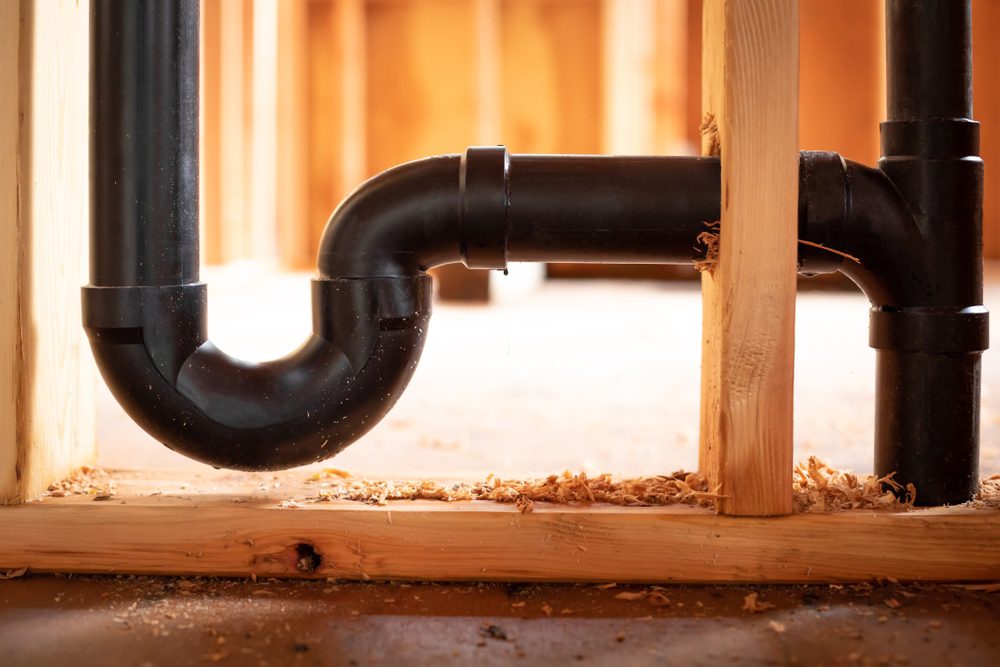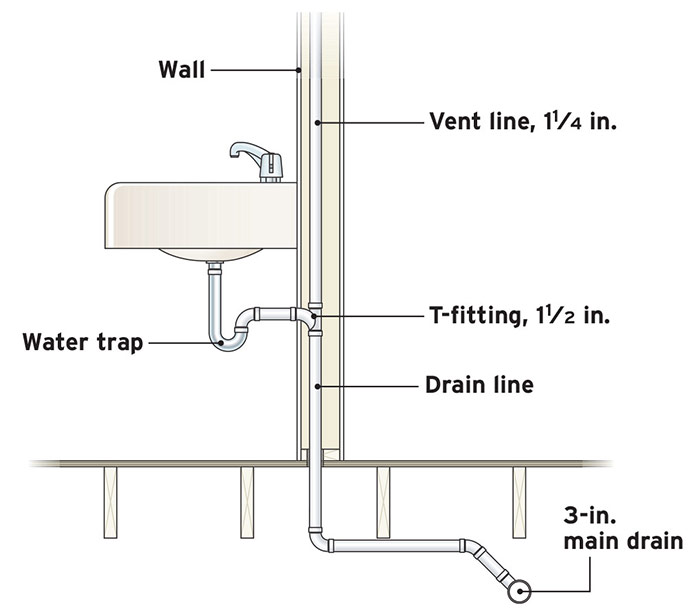How Correct Ventilation Safeguards Your Plumbing System
How Correct Ventilation Safeguards Your Plumbing System
Blog Article
We have come across the article on What Is A Plumbing Vent & How Do They Work? down the page on the internet and decided it made good sense to quickly share it with you on this page.

Correct ventilation in pipes systems is typically overlooked, yet it is vital for keeping the performance and security of your home's plumbing. Ventilation aids manage air pressure, stop the accumulation of unsafe gases, and make certain the reliable elimination of waste. In this guide, we will certainly discover the relevance of correct pipes ventilation, exactly how it works, and the benefits it gives your pipes system.
Recognizing Air Flow in Pipes
Air flow in plumbing refers to the network of pipelines that allow air to stream through the drain system. These vents serve multiple objectives, consisting of regulating air pressure within the pipelines, avoiding sewage system gases from going into the home, and helping in the smooth circulation of wastewater.
How Ventilation Functions in Plumbing Equipments
Air Pressure Regulation
Appropriate ventilation preserves balanced air pressure within the plumbing system. When water moves via pipes, it displaces air. Without ample air flow, this variation can produce adverse pressure, causing slow down drains or siphoning of water from traps, which can trigger undesirable smells to seep into the home.
Stopping Drain Gas Build-up
Among the most critical features of plumbing vents is to prevent sewage system gases, such as methane and hydrogen sulfide, from gathering within the home. These gases can present major health risks and are highly combustible. Vent pipes allow these gases to get away safely outdoors.
Helping in Waste Removal
Ventilation aids in the effective elimination of wastewater by preventing airlocks in the drain system. When air can stream freely via the vents, it enables water and waste to flow efficiently via the pipelines, minimizing the risk of obstructions and back-ups.
Kinds Of Pipes Vents
Main Heap Vent
The primary stack vent, also known as the vent stack, is the primary vent in a plumbing system. It extends from the main drain align through the roof covering, permitting gases to get away and fresh air to get in the system.
Branch Vent
Branch vents attach to the main stack air vent and offer specific components, such as sinks, commodes, and showers. These vents make sure that each component has ample ventilation to work properly.
Air Admittance Valve (AAV).
An Air Admission Valve (AAV) is a one-way shutoff that permits air to get in the pipes system without the demand for a standard air vent pipe prolonging with the roof covering. AAVs are commonly used in renovations or areas where mounting a typical air vent is not practical.
Signs of Poor Air Flow in Plumbing.
Slow Draining Fixtures.
If your sinks, bathtubs, or toilets are draining pipes slowly, maybe a sign of bad ventilation. Poor air flow can develop a vacuum impact, making it tough for water to drain properly.
Gurgling Seems.
Gurgling noises originating from drains pipes are often an outcome of air being drawn with water catches due to unfavorable pressure in the pipes. This is a clear indicator of insufficient air flow.
Unpleasant Odors.
Drain smells inside your home are a red flag that your plumbing system is not correctly ventilated. This can suggest that sewage system gases are not being adequately aired vent outside, leading to potentially unsafe conditions.
Common Ventilation Errors.
Poor Vent Sizing.
Making use of small vent pipelines can cause inadequate air flow and pressure imbalances in the system. It's necessary to use vents that fulfill the certain demands of your plumbing system.
Improper Vent Positioning.
Placing vents too far from the fixtures they serve can decrease their effectiveness. Proper positioning ensures that air can flow openly and effectively with the system.
Disregarding Code Requirements.
Building codes offer particular guidelines for plumbing air flow. Overlooking these codes can lead to a system that stops working to function properly and might result in costly fixings or carcinogen.
Advantages of Proper Ventilation.
Enhanced System Performance.
Appropriately aerated pipes systems run more efficiently, with fewer blockages, faster draining, and much less pressure on the pipes. This effectiveness extends the lifespan of the plumbing system.
Improved Air Top Quality.
By preventing sewer gases from entering your home, proper air flow adds to much better interior air quality, making your living atmosphere healthier and extra comfortable.
Stopping Water Damage.
Sufficient ventilation aids protect against water from being siphoned out of catches, which can bring about sewage system gases getting in the home and triggering water damages over time.
Actions to Ensure Appropriate Air Flow.
Consulting Pipes Codes.
Always get in touch with neighborhood pipes codes when making or changing your plumbing system. These codes provide the necessary guidelines for proper airing vent and ensure your system satisfies safety requirements.
Normal Inspection and Maintenance.
Regular evaluations can help determine prospective ventilation problems before they become significant problems. Upkeep jobs, such as cleaning vent pipes and checking for blockages, are important for maintaining the system in good working order.
Expert Setup.
For new installations or significant adjustments, it's a good idea to hire a professional plumbing. They have the knowledge to guarantee the ventilation system is correctly made and set up according to code.
Final thought.
Appropriate ventilation is a critical component of any pipes system, ensuring that it operates successfully and safely. By understanding the significance of ventilation, recognizing the indicators of poor ventilation, and taking steps to preserve your system, you can protect against pricey issues and safeguard your home's air top quality.
4 Things You Should Know About Your Plumbing Vents
What Plumbing Vents Are
Also called a vent stack, a plumbing vent is a vertical pipe attached to your drain line that runs through your roof. The plumbing vent pipe, or plumbing air vent, removes gas and odors from your plumbing system and allows fresh air to enter the pipes, helping the water to flow out of the drain pipes.
What Plumbing Vents Do
Plumbing vents have two basic functions. One of which is to allow unpleasant smelling wastewater and sewer gasses to escape your plumbing system instead of entering your home. Plumbing vent pipes are typically located on roofs, away from windows, to ensure the fumes exit the home completely.
The other function of the plumbing vent is to move fresh air into your plumbing system. This helps move water through every plumbing fixture in your house, like toilets and sink drains. Think of the way in which you need to let a little air into the bottle as you pour soda in order to make the drink flow smoothly.
Different Types of Plumbing Vents
True vent: This is the most common vent option. In simplest terms, a true vent is a vertical pipe attached to your drain line that exits through the roof. They often function as the main vent that other fixtures can connect to. Re-vent pipe or auxiliary vent: Attached to the drain line near specific plumbing fixtures, re-vent pipes run up and over to connect to the main vent. Common vent: Two plumbing fixtures installed on opposite sides of a wall are typically tied into the vent stack using something known as a sanitary cross. Wet vent: This venting option operates as a drain pipe and a vent at the same time. Wet vent drainage systems drain water from one fixture while venting the air from another. Although they’ve been used for over 100 years, wet vent systems have only recently been added to the plumbing code in many areas. If you’re planning on installing one in a bathroom remodel, make sure you check your local code prior to construction. Loop vent: For free-standing fixtures like kitchen island sinks, loop vents are ideal. These vent pipes run under the floor, rise from the P-trap, and create a loop inside the cabinet sink. Air admittance valve: An AAV is a one-way mechanical valve typically installed at the site of the plumbing fixture. AAVs allow venting to occur without having to tie into a larger venting system. They’re ideal for venting fixtures where you aren’t able to easily connect to an existing vent system. Common Plumbing Vent Issues
Although vent pipes typically don’t have water flowing through them, they’re still subject to many typical plumbing issues. For example, clogs are one of the most common problems associated with sewer vent pipes. If your vent pipe gets clogged, all of your plumbing fixtures tied into the vent stack will be affected.
A sink with a slow drain that bubbles and gurgles or a strong sewage smell around your toilet are both indicators that your toilet vent pipe is clogged. Because most vent pipes exit through the roof, old leaves, twigs or even a bird’s nest could be clogging the pipe.
Clogs in your vent pipe system cause a buildup of negative pressure, meaning that water won’t be able to flow out of your home very well. It’s similar to putting your finger over the opening of a straw to trap water inside. When you remove your finger, the water is able to flow out of the straw.
If you suspect you have any blockage in your vent, make sure you have a professional come examine the situation. Left unchecked, a blocked air vent can lead to other costly repairs, like leaks and sediment buildup.
Under Pressure
Pipe vents are essential aspects of a home’s plumbing system. Owning a home means learning about all sorts of things you never put much thought into before. But by understanding as much as you can about the important systems of your home, you can keep those budgets intact and those anxiety levels low.
https://www.homeserve.com/en-us/blog/home-improvement/plumbing-vents/

As a keen reader on Essential Plumbing Vent Pipes: Understanding Their Role, I imagined sharing that short article was important. Are you aware of somebody else who is excited by The Upsides of Proper Ventilation in Plumbing Design? Feel free to share it. Kudos for being here. Don't forget to check our website back soon.
Schedule Services Report this page